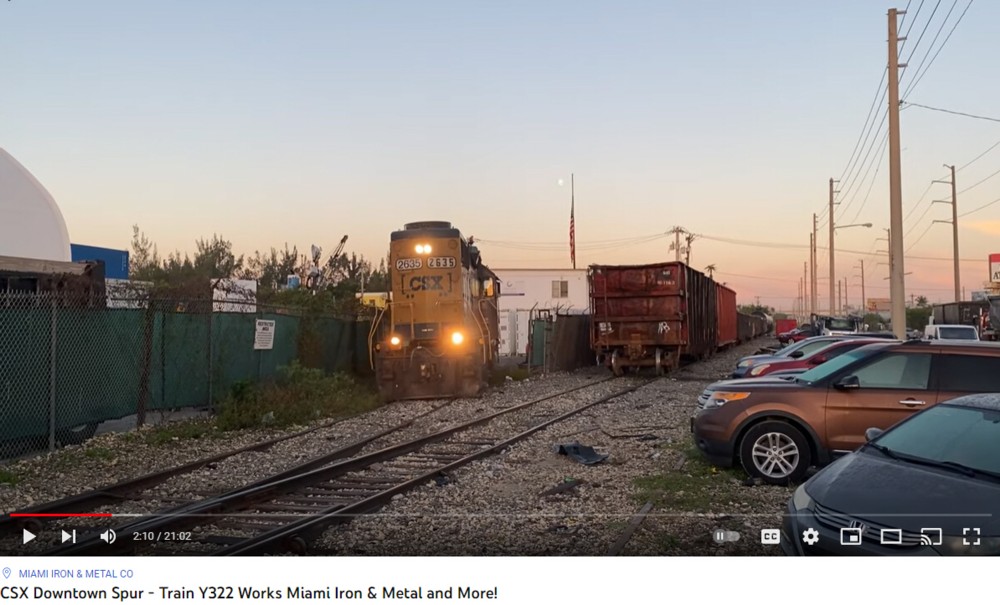
In the above video clip, The Downtown Spur job works Miami Iron and Metal.
Let’s take a pause in our day (pun intended) and talk about switching operations. Looking at a crew’s shift, where does the bulk of the time go? Moving cars? Nope? Travel time? A little but not that much. Where then?
Last week Tolga Erbora produced an excellent video of operations on The Downtown Spur. At this point in history the spur has five active industries. Four of them are “very” active. One of the great things about the clip is that on the day it as made ALL five of the industries were worked and the sequence was fully documented from end to end. It doesn’t get much better than that.
After watching it, I reached out to Tolga to fill in some blanks. How long did it take to work the whole job? Answer: Four hours! They pulled onto the spur at 6am and went back onto the CSX main at 10 am. What is the speed limit on the line? Answer: 10 mph. Of the five industries, three of the moves were basic “swapping loads for empties”. The other two just involved picking up an empty. Simple.
You’ll notice in the video that they aren’t “crawling” down the line. I did some speed testing on my layout. Actually, 10mph is faster than you’d think. The spur is 3 1/2 miles long. At 10mph that’s only 20 minutes of travel time down and 20 back. The moves are simple, travel time isn’t that much. How on earth did this take four hours?
The answer is in the pun at the beginning of the blog…… pauses in the action. Walking, waiting, throwing gates and switches, …..more walking and more waiting. The tip off is subtle but there if you look for it. Go to the 6:20 mark of the video. Look carefully. See the crew member struggling with the gate? Keep watching. Notice the time spent for the crew to walk back to the locomotive. They aren’t sprinting nor are they dawdling. Notice how much time is spent as the engineer waits for his crew to come back to the engine, a sequence that is repeated over and over.
What are some takeaways to apply to our op. sessions? Gimmicks and tricks get hokey in a hurry. Try as we might, many aspects of real railroading just aren’t practical to replicate in model form. Forcing a model railroad crew (or yourself) to spend inordinate amounts of contrived time waiting on an imaginary crew to walk from A to B isn’t practical. (On a related note, at many points in the sequence the loco. isn’t crawling so you wouldn’t want to be going down your entire line at a 3mph walking speed. At times in the sequence yes, but not always.) For me the main point is the overarching theme of assuming a measured, relaxed pace when switching our layouts. The atmosphere isn’t that of a Starbucks barista on a frantic weekday morning, filling orders at a frenzied pace. It’s a middle ground. Not a contrived turtle pace, not run and gun, but one of just relaxing, knowing you have plenty of time, and enjoying your layout. (The gaps in the video where the loco. isn’t moving give some guidance as to what this looks like). In other words going about your work leisurely.